"At a French Studio,
Great Ghosts
and Big Plans",
The New York Times,
13 mai 2007.
NICE, France
FOR more than 30 years the olive- and palm-tree-laden grounds of the Victorine studios here, just steps from the sea, have tempted a steady stream of producers and businessmen hoping to revive the place where classics like Truffaut’s "Day for Night" [La Nuit américaine, 1973] and Hitchcock’s "To Catch a Thief" [La Main au collet, 1955] were filmed.
But a very Mediterranean mix of local bureaucracy and political corruption has helped defeat them all, including Michael Douglas and his brother Joel, who took charge of the Victorine in the mid-1980s, only to leave a few years later with little to show for it.
“We’ve been disappointed so many times,” said Emile Martin, 64, who began as the Victorine’s film projectionist in 1965 in the studio’s heyday and is the archivist and unofficial historian. “We had a lot of hope when the Douglas brothers came, but Michael hardly ever showed up, and Joel just played pinball all day.”
Yet the entrepreneurs keep coming, and the Victorine, whose Paramount Pictures-style white arched gate was recently refurbished, has flickered back to life, most recently to capture the antics of Rowan Atkinson on film. Mr. Atkinson, the British comic best known to American audiences for his hammy cameos in movies like "Four Weddings and a Funeral" [Quatre mariages et un enterrement, 1994] and "Love Actually" [Idem, 2003], is no Cary Grant. Nor is his new movie, "Mr. Bean's Holiday" [Les Vacances de Mr. Bean, 2007], reminiscent of Hitchcock, though it is set in the south of France. But for Jean-Pierre Barry, the owner of Euro Media Television, the Paris-based television and film powerhouse, which took over the studio in 1999, the Bean movie demonstrates that his plan to renew the studio by vigorously promoting it as a film- and TV-friendly place is working.
“Mr. Bean’s Holiday,” which recreated part of the Cannes Film Festival on the Victorine’s soundstages, has been a huge hit internationally and arrives in the United States in August. The Victorine “must survive, and we’re going to see to it that it does,” Mr. Barry, who began Euro Media on a shoestring in 1983, said as he sped down a Nice highway in his Mini-Cooper, bound for the airport to pilot his own jet back to Paris.
“I am Belgian, don’t forget,” he said. “We are different from French. We have a fighting business mentality. We are making sure Hollywood knows we’re here and open for business.”
But even Mr. Barry concedes he faces an uphill battle and a deadline. The Victorine must compete with other established studios in Europe, while newer facilities dangle cheaper labor and tax breaks to lure productions. And he and Euro Media face a homegrown political obstacle: the city, which owns the property, can turn the studio into a housing development in 2018.
The Victorine’s history is a tangled one, but one that is a quintessentially south-of-France story, replete with jet-set-era glamour, tragedy and shady subplots. Created in 1919, about the time the first studios in Hollywood were built, the Victorine has played host to the likes of Jeanne Moreau, Brigitte Bardot, Grace Kelly, Lauren Bacall and David Niven. David Lean died during preproduction at the Victorine of his last, never-completed movie, “Nostromo.” The studio has survived one world war and weathered three major fires. Yet those blows didn’t compare with what Mr. Martin calls the studio’s “catastrophic years,” 1975 to 1983, during the long reign of Nice’s most notorious mayor, Jacques Médecin.
Mr. Médecin presided over such blatant corruption on the Côte d’Azur that Graham Greene, then a resident of nearby Antibes, helped force a criminal investigation that ultimately resulted in Mr. Médecin’s arrest and imprisonment. But not before Mr. Médecin, a regular at the studio commissary, was able to install cronies as studio bosses, some of whom pocketed profits they made from visiting production companies and left without ever reinvesting any money in the studio.
Some, Mr. Martin said, sabotaged the place on their way out, cutting cables and breaking equipment. “It was what we call a southern way of doing things,” said Antoine Sabarros, a film and television producer who has worked at the Victorine for 30 years. “But it got to the point where you had to fight to get anything accomplished here, and I’ve gotten sick of fighting.”
Conditions at the studio were so bad during the filming in 1982 of Sean Connery’s final appearance as James Bond, in "Never Say Never Again" [Jamais plus jamais, 1983], that the director, Irvin Kershner, threatened to stop production if the filthy screens in the projection room, yellowed from decades of smoking, were not cleaned.
“The grass was so high it was like a savanna out here,” Mr. Martin remembered. “The crew for the Bond film had trouble moving the equipment around. It was embarrassing.”
The stirrings of a comeback began in 1996, when the action star Jean-Claude Van Damme arrived to film "Maximum Risk" [Risque maximum, 1996] and "Double Team" [Id., 1997]. And Euro Media’s takeover — with its strategy of pursuing a mix of prestige and lowbrow films, along with television shows and commercial production for brands like Toyota and McDonald’s — has accelerated the rejuvenation of the Victorine, officially called Studios Riviera. John Frankenheimer’s "Ronin" [Id., 1998], with Robert De Niro; "Swordfish" [Opération Espadon, 2001], starring John Travolta; and the director Neil Jordan’s "Good Thief" [L'Homme de la Riviera, 2002] have been filmed at the studio. And the lowbrow French surfer film "Brice de Nice" [Id., 2005] one of the biggest box office successes in French history, was shot partly at the Victorine in 2004, along with other French films starring national legends like Catherine Deneuve and Miou-Miou.
Since Euro Media took over in 1999, 24 feature films have made use of the Victorine, and the number of television shows shot there has doubled. In 2000, 18 television commercials were made there; by 2005 the number had risen to more than 50.
Though the Victorine is faring better, the competition among European studios to lure filmmakers has never been more fierce. The studio has always been dwarfed by Rome’s larger Cinecitta Studios ("La Dolce Vita" [Id., 1960] and "The Gangs of New York" [Gangs of New York, 2002] to name a few), and today studios in Eastern Europe can offer cheaper shoots. Even Pinewood Studios near London recently lost its stranglehold on the James Bond franchise when the producers of "Casino Royale" [Id., 2006] decided to film at the Barrandov Studios in Prague.
And there’s a more ominous threat in Spain, where in 2005 an $88 million studio, Ciudad de la Luz, opened in the coastal city of Alicante. French filmmakers are signing on; the new Gérard Depardieu movie, "Astérix aux Jeux Olympiques" [Id., 2008] was shot there last year. Unlike the Victorine, which receives no government money, the Spanish government hands out hefty subsidies, including a reported six million euros — more than $8 million — for "Astérix."
To compete better, Euro Media and Mr. Barry have upgraded the Victorine and the marketing efforts for it. The company recently opened a modern recording complex, run by a French-born Los Angeles music producer. And last year the Victorine hired its first international marketing agent, Dana Davidson Thevenau, an American who was the director of a French film commission. She recently went to Los Angeles to raise the studio’s profile in the film industry and is overseeing an elaborate marketing display at the Cannes Film Festival, which begins Wednesday.
“It’s a huge job to turn this studio around,” Ms. Thevenau said, “especially when filmmakers can go anywhere in the world. But we have this incredible location, and we have this amazing history. When Rowan Atkinson was here, he wanted to hear all the stories about Truffaut and Hitchcock and Grace Kelly.”
Standing on the upper patio of the Victorine’s villa, built for a prince in the late 1800s and the headquarters for a succession of studio bosses, Mr. Martin reminisced about those glory days. He recalled sharing some of Katharine Hepburn’s chocolates during "The Madwoman of Chaillot" [La Folle de Chaillot, 1969] drinking whiskey with Richard Burton on "The Comedians" [Les Comédiens, 1967], playing himself in a bit part in "Day for Night" and watching workers construct a swimming pool that Elizabeth Taylor requested but never used.
If that history isn’t enough, some veterans of the Victorine trust in another savior: the ghost of Rex Ingram, an Irish-born Hollywood director who took over the Victorine in 1925 and shot several films there. “I heard about the ghost the first day I started here,” said Patricia Douglas, a French film production coordinator and the former wife of Joel Douglas, who met him when the Douglas brothers filmed "The Jewel of the Nile" [Le Diamant du Nil, 1985] at the Victorine in 1985. “Everyone said it was a positive ghost.
“And,” she added, “it doesn’t want the Victorine to die.”
FOR more than 30 years the olive- and palm-tree-laden grounds of the Victorine studios here, just steps from the sea, have tempted a steady stream of producers and businessmen hoping to revive the place where classics like Truffaut’s "Day for Night" [La Nuit américaine, 1973] and Hitchcock’s "To Catch a Thief" [La Main au collet, 1955] were filmed.
But a very Mediterranean mix of local bureaucracy and political corruption has helped defeat them all, including Michael Douglas and his brother Joel, who took charge of the Victorine in the mid-1980s, only to leave a few years later with little to show for it.
“We’ve been disappointed so many times,” said Emile Martin, 64, who began as the Victorine’s film projectionist in 1965 in the studio’s heyday and is the archivist and unofficial historian. “We had a lot of hope when the Douglas brothers came, but Michael hardly ever showed up, and Joel just played pinball all day.”
Yet the entrepreneurs keep coming, and the Victorine, whose Paramount Pictures-style white arched gate was recently refurbished, has flickered back to life, most recently to capture the antics of Rowan Atkinson on film. Mr. Atkinson, the British comic best known to American audiences for his hammy cameos in movies like "Four Weddings and a Funeral" [Quatre mariages et un enterrement, 1994] and "Love Actually" [Idem, 2003], is no Cary Grant. Nor is his new movie, "Mr. Bean's Holiday" [Les Vacances de Mr. Bean, 2007], reminiscent of Hitchcock, though it is set in the south of France. But for Jean-Pierre Barry, the owner of Euro Media Television, the Paris-based television and film powerhouse, which took over the studio in 1999, the Bean movie demonstrates that his plan to renew the studio by vigorously promoting it as a film- and TV-friendly place is working.
“Mr. Bean’s Holiday,” which recreated part of the Cannes Film Festival on the Victorine’s soundstages, has been a huge hit internationally and arrives in the United States in August. The Victorine “must survive, and we’re going to see to it that it does,” Mr. Barry, who began Euro Media on a shoestring in 1983, said as he sped down a Nice highway in his Mini-Cooper, bound for the airport to pilot his own jet back to Paris.
“I am Belgian, don’t forget,” he said. “We are different from French. We have a fighting business mentality. We are making sure Hollywood knows we’re here and open for business.”
But even Mr. Barry concedes he faces an uphill battle and a deadline. The Victorine must compete with other established studios in Europe, while newer facilities dangle cheaper labor and tax breaks to lure productions. And he and Euro Media face a homegrown political obstacle: the city, which owns the property, can turn the studio into a housing development in 2018.
The Victorine’s history is a tangled one, but one that is a quintessentially south-of-France story, replete with jet-set-era glamour, tragedy and shady subplots. Created in 1919, about the time the first studios in Hollywood were built, the Victorine has played host to the likes of Jeanne Moreau, Brigitte Bardot, Grace Kelly, Lauren Bacall and David Niven. David Lean died during preproduction at the Victorine of his last, never-completed movie, “Nostromo.” The studio has survived one world war and weathered three major fires. Yet those blows didn’t compare with what Mr. Martin calls the studio’s “catastrophic years,” 1975 to 1983, during the long reign of Nice’s most notorious mayor, Jacques Médecin.
Mr. Médecin presided over such blatant corruption on the Côte d’Azur that Graham Greene, then a resident of nearby Antibes, helped force a criminal investigation that ultimately resulted in Mr. Médecin’s arrest and imprisonment. But not before Mr. Médecin, a regular at the studio commissary, was able to install cronies as studio bosses, some of whom pocketed profits they made from visiting production companies and left without ever reinvesting any money in the studio.
Some, Mr. Martin said, sabotaged the place on their way out, cutting cables and breaking equipment. “It was what we call a southern way of doing things,” said Antoine Sabarros, a film and television producer who has worked at the Victorine for 30 years. “But it got to the point where you had to fight to get anything accomplished here, and I’ve gotten sick of fighting.”
Conditions at the studio were so bad during the filming in 1982 of Sean Connery’s final appearance as James Bond, in "Never Say Never Again" [Jamais plus jamais, 1983], that the director, Irvin Kershner, threatened to stop production if the filthy screens in the projection room, yellowed from decades of smoking, were not cleaned.
“The grass was so high it was like a savanna out here,” Mr. Martin remembered. “The crew for the Bond film had trouble moving the equipment around. It was embarrassing.”
The stirrings of a comeback began in 1996, when the action star Jean-Claude Van Damme arrived to film "Maximum Risk" [Risque maximum, 1996] and "Double Team" [Id., 1997]. And Euro Media’s takeover — with its strategy of pursuing a mix of prestige and lowbrow films, along with television shows and commercial production for brands like Toyota and McDonald’s — has accelerated the rejuvenation of the Victorine, officially called Studios Riviera. John Frankenheimer’s "Ronin" [Id., 1998], with Robert De Niro; "Swordfish" [Opération Espadon, 2001], starring John Travolta; and the director Neil Jordan’s "Good Thief" [L'Homme de la Riviera, 2002] have been filmed at the studio. And the lowbrow French surfer film "Brice de Nice" [Id., 2005] one of the biggest box office successes in French history, was shot partly at the Victorine in 2004, along with other French films starring national legends like Catherine Deneuve and Miou-Miou.
Since Euro Media took over in 1999, 24 feature films have made use of the Victorine, and the number of television shows shot there has doubled. In 2000, 18 television commercials were made there; by 2005 the number had risen to more than 50.
Though the Victorine is faring better, the competition among European studios to lure filmmakers has never been more fierce. The studio has always been dwarfed by Rome’s larger Cinecitta Studios ("La Dolce Vita" [Id., 1960] and "The Gangs of New York" [Gangs of New York, 2002] to name a few), and today studios in Eastern Europe can offer cheaper shoots. Even Pinewood Studios near London recently lost its stranglehold on the James Bond franchise when the producers of "Casino Royale" [Id., 2006] decided to film at the Barrandov Studios in Prague.
And there’s a more ominous threat in Spain, where in 2005 an $88 million studio, Ciudad de la Luz, opened in the coastal city of Alicante. French filmmakers are signing on; the new Gérard Depardieu movie, "Astérix aux Jeux Olympiques" [Id., 2008] was shot there last year. Unlike the Victorine, which receives no government money, the Spanish government hands out hefty subsidies, including a reported six million euros — more than $8 million — for "Astérix."
To compete better, Euro Media and Mr. Barry have upgraded the Victorine and the marketing efforts for it. The company recently opened a modern recording complex, run by a French-born Los Angeles music producer. And last year the Victorine hired its first international marketing agent, Dana Davidson Thevenau, an American who was the director of a French film commission. She recently went to Los Angeles to raise the studio’s profile in the film industry and is overseeing an elaborate marketing display at the Cannes Film Festival, which begins Wednesday.
“It’s a huge job to turn this studio around,” Ms. Thevenau said, “especially when filmmakers can go anywhere in the world. But we have this incredible location, and we have this amazing history. When Rowan Atkinson was here, he wanted to hear all the stories about Truffaut and Hitchcock and Grace Kelly.”
Standing on the upper patio of the Victorine’s villa, built for a prince in the late 1800s and the headquarters for a succession of studio bosses, Mr. Martin reminisced about those glory days. He recalled sharing some of Katharine Hepburn’s chocolates during "The Madwoman of Chaillot" [La Folle de Chaillot, 1969] drinking whiskey with Richard Burton on "The Comedians" [Les Comédiens, 1967], playing himself in a bit part in "Day for Night" and watching workers construct a swimming pool that Elizabeth Taylor requested but never used.
If that history isn’t enough, some veterans of the Victorine trust in another savior: the ghost of Rex Ingram, an Irish-born Hollywood director who took over the Victorine in 1925 and shot several films there. “I heard about the ghost the first day I started here,” said Patricia Douglas, a French film production coordinator and the former wife of Joel Douglas, who met him when the Douglas brothers filmed "The Jewel of the Nile" [Le Diamant du Nil, 1985] at the Victorine in 1985. “Everyone said it was a positive ghost.
“And,” she added, “it doesn’t want the Victorine to die.”
Dana Kennedy








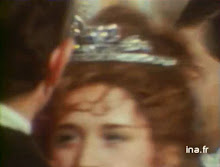




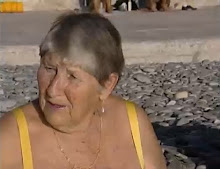



+dans+les+rues+de+Nice.jpg)



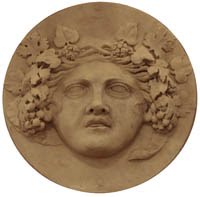


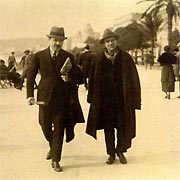


.bmp)













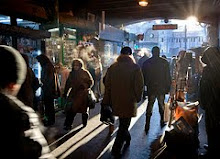

Aucun commentaire:
Enregistrer un commentaire